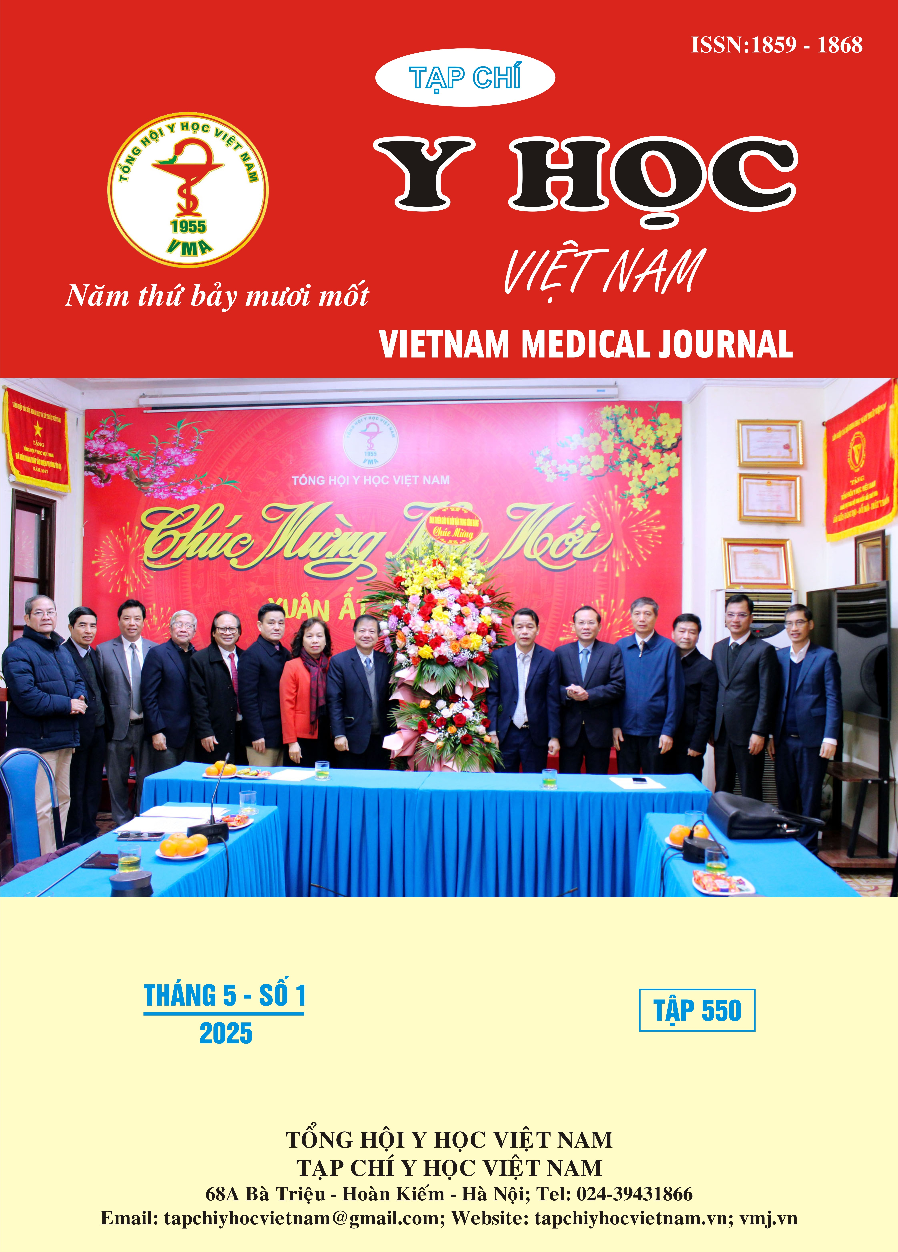GENOTYPIC DISTRIBUTION OF HPV IN WOMEN UNDERGOING CERVICAL CANCER SCREENING IN VIETNAM
Main Article Content
Abstract
Objectives: To examine the epidemiological characteristics of HPV infection and the distribution of HPV genotypes in women undergoing cervical cancer screening. Methods: A cross-sectional descriptive study was conducted on 2,346 women screened using the HPV DNA test at Hanoi Medical University Hospital and Vietnam Military Medical Academy from October 2021 to October 2024. The Multiplex-PCR and Nested-PCR methods were used to determine HPV genotypes. Results: The HPV infection rate was 28%, with single infections accounting for two-thirds of cases. There was an age-related distribution pattern among individuals with single and multiple HPV infections. Among the 40 HPV types surveyed, 21 were detected, with HPV 16 having the highest prevalence (11.7%). Conclusion: The study shows that the prevalence of HPV infection among women undergoing cervical cancer screening is 28%, with single infections being the most common, occurring across all age groups, particularly between 18 and 50 years old. Among the detected types, HPV type 16 has the highest prevalence, followed by type 18 and type 58.
Article Details
Keywords
Cervical cancer, HPV genotypes
References
2. Burd EM. Human papillomavirus and cervical cancer. Clin Microbiol Rev. 2003;16(1):1-17. doi:10.1128/CMR.16.1.1-17.2003
3. Nartey Y, Amo-Antwi K, Hill PC, et al. Human papillomavirus genotype distribution among women with and without cervical cancer: Implication for vaccination and screening in Ghana. PLoS One. 2023;18(1):e0280437. doi:10.1371/journal.pone.0280437
4. Cox JT, Castle PE, Behrens CM, et al. Comparison of cervical cancer screening strategies incorporating different combinations of cytology, HPV testing, and genotyping for HPV 16/18: results from the ATHENA HPV study. Am J Obstet Gynecol. 2013;208(3):184.e1-184.e11. doi:10.1016/j.ajog.2012.11.020
5. Trần Thị Thanh Thuý, Lê Văn Quảng. Tỷ lệ nhiễm hpv và mối liên quan đến các bất thường tế bào cổ tử cung ở bệnh nhân khám phụ khoa tại bệnh viện K. Tạp chí Y học Việt Nam. 2021; 509(1).
6. Chen X, Xu H, Xu W, et al. Prevalence and genotype distribution of human papillomavirus in 961,029 screening tests in southeastern China (Zhejiang Province) between 2011 and 2015. Sci Rep. 2017;7(1):14813. doi:10.1038/s41598-017-13299-y
7. Nguyễn Duy Ánh. Nghiên cứu tỷ lệ mắc HPV và một số yếu tố liên quan ở phụ nữ trong độ tuổi sinh sản ở Hà Nội. VMJ. 2022;512(1). doi:10.51298/vmj.v512i1.2218
8. Phạm Thị Thanh Yên, Lưu Thị Hồng, Lê Quang Vinh và CS. Tỷ lệ nhiễm Human Papilloma Virus ở phụ nữ đến khám tại Bệnh viện Phụ Sản Trung Ương. Tạp chí Phụ sản. 2016;14(1):125-128.
9. Wentzensen N, Schiffman M, Palmer T, Arbyn M. Triage of HPV positive women in cervical cancer screening. J Clin Virol. 2016;76 Suppl 1(Suppl 1):S49-S55. doi:10.1016/j.jcv. 2015.11.015


